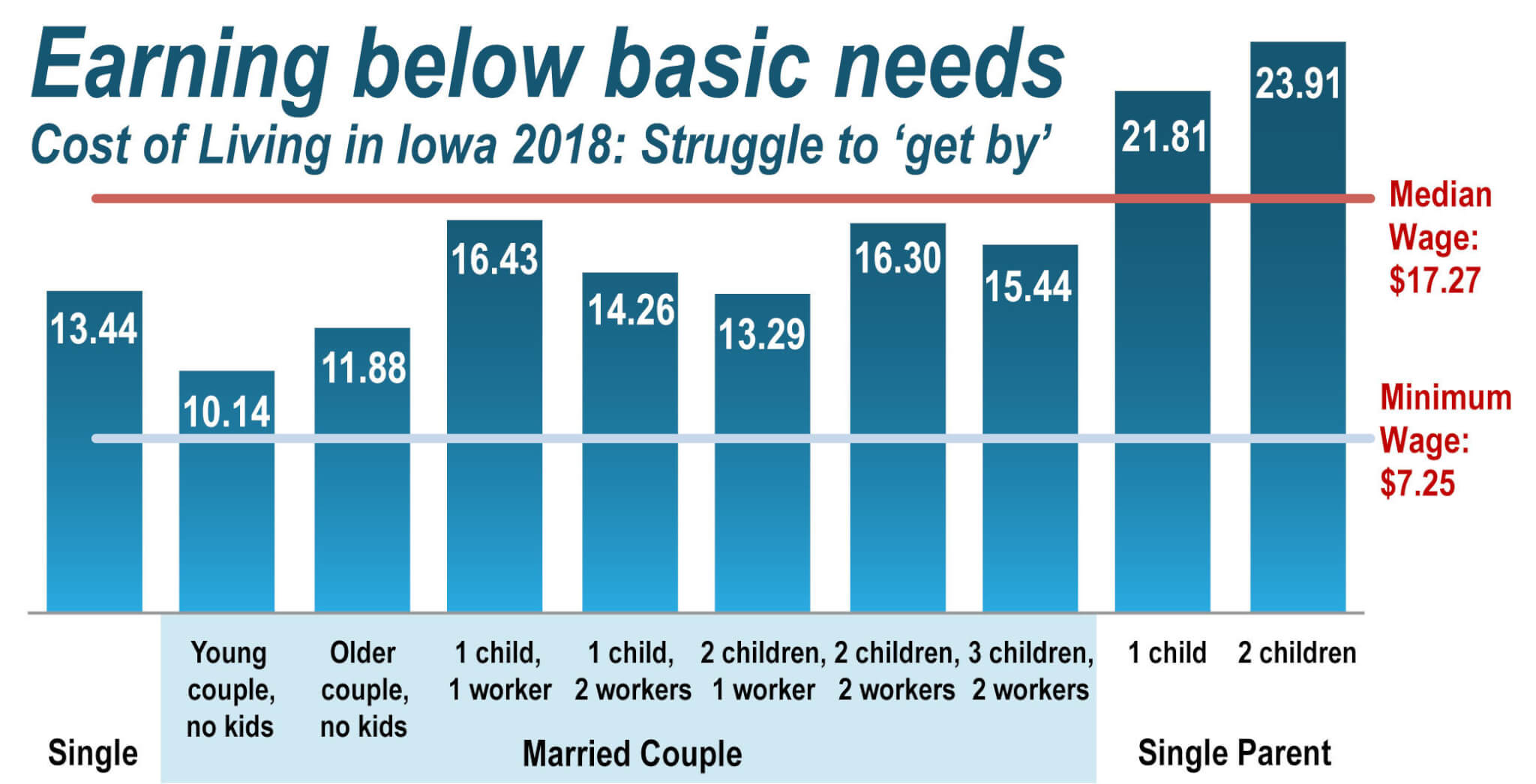
From the Iowa Policy Project.
Our 6th edition of The Cost of Living in Iowa finds that roughly 100,000 Iowa working households are unable to make basic needs. [1] Put another way, about 17 percent — or 1 in 6 — households cannot get by on their income alone. It is a critical number that should inform countless public policy discussions for the remainder of 2018 and on into the next legislative session.
Part One of this report details how much working families must earn in order to meet their basic needs, while Part Two estimates the number and proportion of Iowa working households able to earn enough. This latest edition adds new analysis by race, Hispanic origin, and gender.
These pieces provide the foundation for Part Three, which is forthcoming and will connect the dots to further illustrate the importance of public work support programs for many Iowans, who despite their work efforts, are not able to pay for the most basic living expenses.
We construct basic needs budgets that represent what it takes to survive rather than thrive in the state of Iowa. These budgets include allowances for rent, utilities, food prepared at home, child care, health care, transportation, clothing and other household necessities. The basic budget does not include savings, loan payments, education expenses, any entertainment or vacation, social or recreational travel, or meals outside the home.
In Part One, we find statewide that a single parent with two children needs to earn a wage of $23.91 per hour in order to meet basic needs. A two-parent household with one child and one parent working need an hourly wage of $13.29, compared to $16.30 for the same family type with two workers. Differences in cost from one county to another can be dramatic. The total annual basic needs budget for a family with two working parents and two children was $10,600 higher in the highest cost county compared to the lowest cost county. No family type is able to meet basic needs on Iowa’s $7.25 minimum wage.
Part Two uses census data to estimate the number of Iowa working households that are able to meet the basic needs without public assistance. In 2018 we find that 17 percent of households or 227,000 Iowans live below this threshold. [2] Broken down further, fully 62 percent of single-parent working households are unable to meet basic needs. For this family type, there is an average gap of $20,000 between after-tax income and basic needs expenses. A larger share of African American (30 percent), Hispanic (28 percent), and female-headed (19 percent) households are unable to meet basic needs in Iowa.
The cost of living in Iowa continues to rise. Working families and individuals in Iowa must earn substantially above the official poverty threshold — in some cases nearly three times the poverty level — to achieve a very basic standard of living in Iowa without the help of public supports. Part Three of The Cost of Living in Iowa 2018 will show the role of work support programs in bridging this gap.
By Natalie Veldhouse
Research associate for the nonpartisan Iowa Policy Project
Reprint from Iowa Policy Project
Posted 8/7/18
Politics

Biden announces new action to address gun sale loopholes
The Biden administration on Thursday announced new action to crack down on the sale of firearms without background checks and prevent the illegal...

Biden cancels student loan debt for 2,690 more Iowans
The Biden administration on Friday announced its cancellation of an additional $7.4 billion in student debt for 277,000 borrowers, including 2,690...
Local News

No more Kum & Go? New owner Maverik of Utah retiring famous brand
Will Kum & Go have come and gone by next year? One new report claims that's the plan by the store's new owners. The Iowa-based convenience store...

Here’s a recap of the biggest headlines Iowa celebs made In 2023
For these famous Iowans, 2023 was a year of controversy, career highlights, and full-circle moments. Here’s how 2023 went for the following Iowans:...





